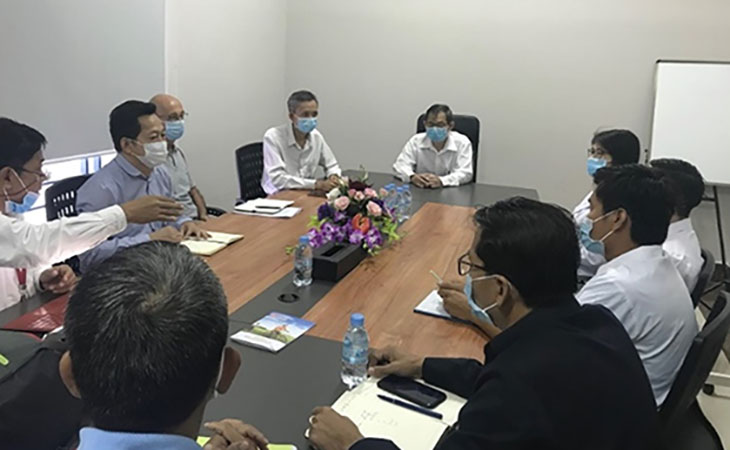Quality assessment at Kossamhak Hospital in Phnom Penh


Cambodia
December 4, 2020
Today was the last of the five-evaluation sessions of the Quality Management System (QMS) conducted by the NRL in collaboration with the BMLS and the Mérieux Foundation in the framework of SEALAB project.
In short, the National Reference Laboratory (NRL) based in Australia is responsible of reinforcing the QMS in 5 laboratories of 5 Referral Hospitals in Cambodia: Battambang Provincial Hospital, Kampong Chhnang Provincial Hospital, Kampong Cham Provincial Hospital, Takeo Provincial Hospital and Phnom Penh Kossamak Referral Hospital.
The initial phase of the project is to provide a situational analysis of the current QMS status in the selected laboratories to serve as a starting point to monitor progress during SEALAB project and to allow developing a QMS assessment report that will be used to design an action plan, factoring in discussions/ outcomes arising from the assessment meeting.
The travel restrictions due to the COVID crisis have forced the NRL to adapt their methodology to conduct the assessments:
This process to conduct the assessment was highly satisfactory.
These on site assessment meetings have shown a strong commitment of laboratories’ personnel to participate in this exercise with a very proactive contribution.
An immediate benefit of the assessment is that requiring examining SOPs or Technical Manuals give opportunity to some Lab technicians to discover and read the documents and discussions will likely result in refreshing some procedures. It was also interesting to see that on occasion, lively discussions took place among people involved in the assessment when getting out of the routine work.
It is important to point out the critical role of the facilitator, Dr. Mardy Sek, who is familiar with the questionnaire after several assessments; he could clarify complex points of the questionnaire, help to fill specific parts linked with the onsite visit, and translate in Khmer to get more comments from lab technicians uncomfortable with English.